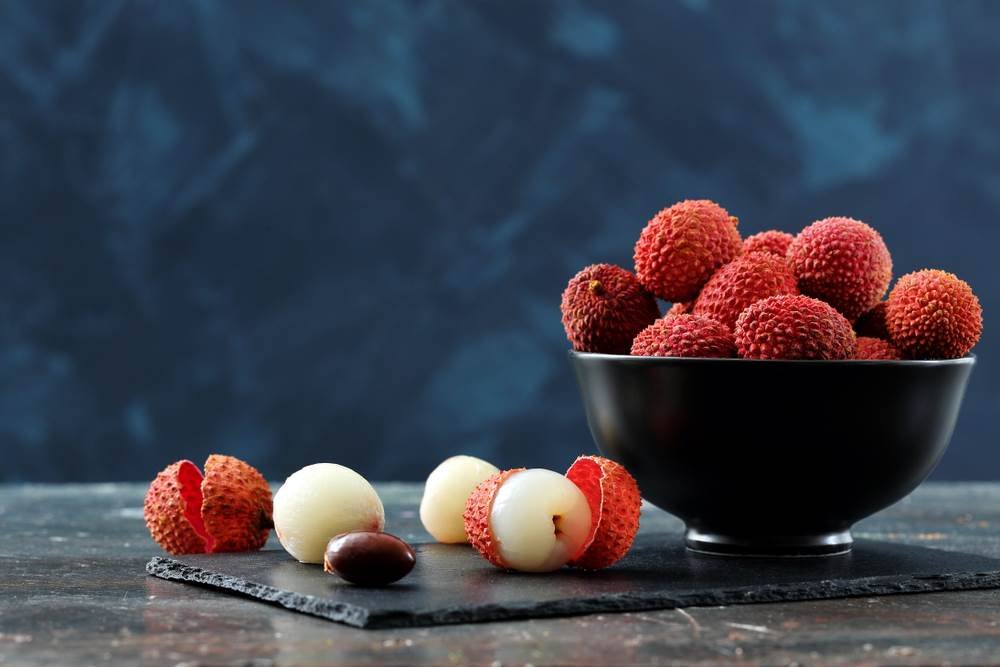
Lychee
The lychee fruits (Litchi chinensis) are a popular tropical fruit that comes from China, South Africa, and Southeast Asia. The lychee is small, and it is a round – shaped fruit with smooth skin and white flesh. A mature lychee tree produces approximately 1,000 fruits per year. A single lychee fruit weighs around 10 grams and its size varies depending on the variety. Litchis have been cultivated since ancient times, especially in China, where they were planted along roadsides.

lychees fruit
In the United States, lychees became popular after World War II, when they were introduced from Hawaii. The majority of commercial lychee production occurs in Taiwan, Thailand, South Africa, the Philippines, Indonesia, Malaysia, Vietnam, and Mexico.
Definition of Lychee
The definition of lychee is simple, It is a round, yellow-orange drupe containing one seed surrounded by a fleshy aril.

Definition of Lychee
Most commercial varieties produce fruits ranging between 2–5 cm (0.8–2 inches) in diameter. Fresh Lychees are fruit grown in tropical climates around the world, but lychees are famous for their sweetest taste and are often eaten fresh or dried.

Definition of lychees
There are two types of lychee trees in the wild; the evergreen tree and the deciduous tree. In commercial cultivation, both types of trees are used. Evergreens have larger fruits than deciduous trees.
Leeches Fruits
Leeche Fruit are commonly eaten fresh, canned, or dried, depending on their ripeness. Fresh lychees are green when unripe, yellowish-orange when ripe, and red when fully mature.
When unripe, they are soft and juicy; when ripe, they are firm and dry. Ripe ones are best stored at room temperature, while unripe ones should be kept refrigerated.
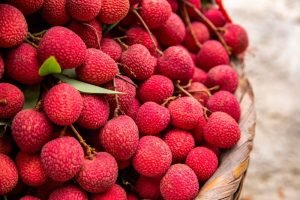
lychee fruit is good
1. Lychee
Lychee is a subtropical fruit tree native to China, India, Indonesia, Malaysia, Myanmar, Thailand, Vietnam, South Africa, and Singapore. Its fruits are popular throughout Southeast Asia, especially in Taiwan, Hong Kong, Japan, South Korea, and the Philippines, where they have been cultivated since ancient times.
2. Leeche nuts are widely eaten fresh in their ripened state. However, they may be dried, canned, frozen, juiced, pickled, or fermented to make them last longer. In some parts of Asia, lychees are often preserved in syrup and candied as well.
3. Kiwi and grapes, fruit similar to lychee.
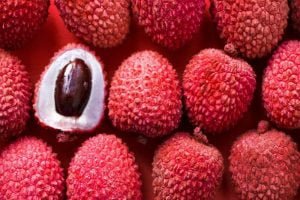
lychee
4. The leeches nuts is a member of the genus Litchi, which also includes litchis, mangosteens, and custard apples.
5. The lychee was first domesticated in southern China around 2500 BC. Today, fresh lychees are grown commercially worldwide.
6. The name “Lychee” comes from the Greek word lykos meaning wolf. There are two theories about how the fruit got its name. One says that the lychee’s resemblance to a wolf’s head helped spread the story that the fruit had originated from wolves eating the fruit. Another theory is that the fruit resembles the shape of a wolf’s jaw.
7. Lychee Fruit
Lychee Fruit was introduced to Europe in the 15th century, and today, they are widely cultivated in temperate regions across the globe.
8. Fresh Lychees are a favorite among children. In fact, many children eat lychees before going to bed, believing that it will help them dream about their future.
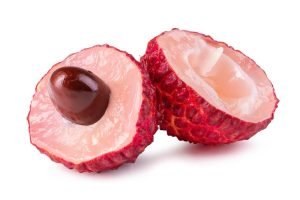
Litchi
9. Because of their high sugar content, Lychees fruit is known to cause tooth decay. People who suffer from diabetes should avoid consuming lychees due to their high sugar content.
10. Leeches nuts are rich in vitamin C, fiber, iron, copper, manganese, zinc, and potassium.
11. Litche is commonly sold in markets in Asian countries.
12. Lychees are harvested between February and April.
13. Lychees are imported from Southeast Asia, and South Africa, particularly Thailand, Malaysia, and Vietnam.
14. Lychee fruit is available year-round, although it peak during the winter months.
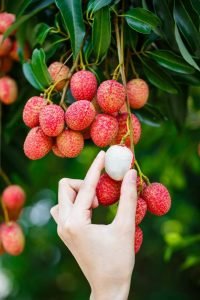
Benefits of lychee
Benefits of Lychee
The Benefits of Lychee are given below.
1.) Fruit Lychee is high in Vitamin C
2.) Lyche fruit help prevent cancer
3.) Fresh Lychees improve brain function
4.) Leeches Fruit boosts the immune system
5.) Fresh Leeches protect against heart disease
6.) Litchi enhances digestion
7.) Leeche Fruit reduces cholesterol levels
8.) Leeches nuts provide fiber
9.) Fresh Lychees promote weight loss
10.) Leeches nuts lower blood pressure
11.) Lychees fruits increase energy
12.) Litchi fruit strengthens bones
14.) Lychee nut has anti-aging properties
15.) Lychee fruit contains antioxidants
16.) Fresh Liches taste great!
Lychee Flavor
A natural lychee flavor can be used to add a unique and refreshing taste to drinks and salads. Lychees are also great in ice creams, milkshakes, and smoothies. They can even be used as a sweet sauce in savory dishes. The flavor is particularly delicious when used in curry dishes.

lychee with a glass of milk
Lychee is best consumed when they are fresh. Lychees should be bright in color and have soft, juicy skin. When they are ripe, the pit should easily pop out. They should also be firm and plump to the touch. Lychees with soft skins may not be ripe enough to enjoy the flavor.
Mold on Lychee Skin
There are many types of mold that occur on lychees, and one type of mold that occurs to them is called black spot. Black spots are caused by a combination of factors including bacteria and fungi.

Mold on lychee skin
As a result of these molds and bacteria, dark-colored patches commonly appear on the surface of the fruit. These patches are not harmful, but they do make the fruit look unsightly.
To remove mold from lychees, soak the lychees in boiling water until the water runs clear. When the water cools down, peel off the rind and cut open the lychees, remove any seeds if there are any, and consume!
Lychi Tree
The Lychi tree is a member of the soapberry family and is commonly grown in Southeast Asia for its fruit. The fruit is aromatic, musky, and acidic, and is especially delicious when dried. Lychees fruit can be eaten as a dessert or added to fruit salads. Their fruit is incredibly delicious, and the lychee tree is beautiful to look at.
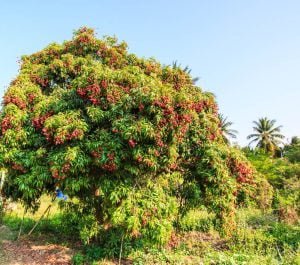
lychee tree
The best way to grow lychees is to plant them in well-drained soil that is not too salty. The best way to achieve this is to dig a mound approximately three feet in diameter that is four to 10 feet deep.
This will prevent the plant from sinking into the ground, and it will also keep the soil from salinizing. Mounding can also increase the risk of pathogens, such as nematodes and fungi, reaching the root zone.
The fruit, however, can be harvested only once the tree is three or five years old. Lychee trees have unique flowers that appear in late winter and early spring.
Lychees Season
Lychees season starts in summer. Leeches are one of the most iconic fruits of the summer season in Southeast Asia. The subtropical lychee fruit originated in China and has since spread throughout the world, and growing in many tropical regions.
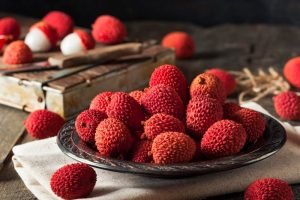
lychee season
The fruit is easily recognizable by its red, bumpy skin and has a sweet, floral flavor and they are typically purchased fresh and used in desserts and ice creams.
Lychees are usually available at Asian and international markets, although they can also be found at many supermarkets. When shopping for lychees, look for ripeness – they should have firm but pliable flesh when squeezed. If they don’t feel firm to the touch, they are likely overripe.
Lychee Varieties
There are many lychee varieties. Some are native to Asia, while others are naturalized from other parts of the world. Most are ornamental and grow well in dooryards. There are also some commercial plantings.
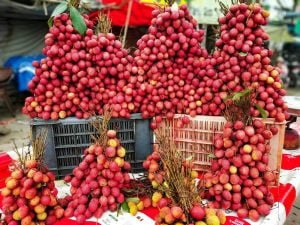
lychee varieties
They are often sold at local markets, and small quantities are exported to the mainland. However, lychees are still considered to have too little economic potential to be considered a major crop.
Lychee trees are native to tropical and subtropical climates, but they can grow in many climates. They are most widely cultivated in the Mediterranean and subtropical regions of the world. They grow up to 40 feet (12 meters) tall, with a dense canopy. Their large, luscious fruit is red in color and has a cinnamon-like flavor.
Lychee Walmart
Although these fruits are not suitable for people with diabetes, you can still enjoy their delicious taste and the Benefits of Lychee. Since they contain natural sugars, they should be consumed in moderation.
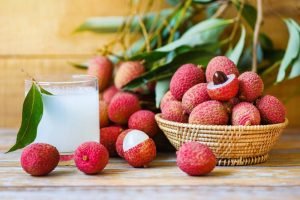
lychee Walmart
Adults should limit themselves to no more than ten Litchi at a time, while children should consume three to four pieces. In addition, you should always remember that canned lychees may contain added sugars, which are bad for your waistline.
Lychee Similar Fruit
Lychees are a delicious fruit for summer. They have a low calorie content and can be eaten in many different ways. The taste of this fruit makes it a favorite among adults and children. However, when eating leeches, make sure to pick those that are firm and have bright, colorful skin.
Benefits of Lychee also contain a fungicide that is suspected to cause cancer. In ancient China, litchis were used as a medicine for ulcers, flatulence, and cough. They were also used to treat, testicular swelling.
People Also Ask:-
How to eat lychee?
- While Wash your lychee fruit well before eating
Wash the lychee fruit with water to remove any kind of dust or debris. - Remove the skin
Just simply remove the top and bottom of the lychee, then cut them in half lengthwise. Using a paring knife, carefully cut out the lychee seeds and pulp into each piece. - Eat the flesh
Use your hand to gently pull apart the pieces of lychee and enjoy!
lyvhee
The lyvhee is native to China and other parts of Asia. Lychees are small, fleshy fruits that grow on trees in tropical areas. The taste of the fruit is sweet and inedible, and they are highly prized in Asian cuisine.
Lychees fruit has an intense fruit flavor reminiscent of strawberry watermelon. Some people also note a hint of citrus. Although leeches do have a distinctive taste, the fruit is best served ripe. The fruit also makes an excellent addition to fruit salads. This syrup can then be added to drinks or used in ice cream and sorbet.
Litches have scaly, red skin that protects the soft, ultra-juicy flesh. The seed is inedible and should be removed before eating. Once peeled, lychees can be stored in the refrigerator for up to two weeks.
How to Grow Lychee from seeds?
Methods to Grow Lychee
1. Lychees are a fruit tree belonging to the family Myrtaceae there are about 400 species of lychee trees and they are native to tropical Asia, Australia, and Madagascar.
Most of them are small deciduous trees, reaching heights of 5-10 m (16-33 ft), and have thick trunks. The leaves are alternate, simple, entire, and deeply lobed, but the flowers are white and fragrant; the fruits are roundish, yellow, 1.5-3 cm (0.6-1.2 in) in diameter, sweet, edible, and juicy. The Lychee seeds are black and hard, but about 0.8 mm (0.03 in) long.
2. Lychee trees are grown in subtropical regions and prefer full sun and well-drained soils rich in humus. They require ample water for good root formation and proper flowering. In temperate climates, but the lychee tree can survive temperatures down to -40C (-40F).
3. When planted in sandy soil, fresh lychees fruits produce abundant crops of small, soft fruits. However, in clayey soils, the roots become weak and cannot take up sufficient nutrients. In heavy clay soils, the trees may not flower at all. If the soil pH is high, the fruits tend to be sour.
4. Lychee Seeds
Germinate best if sown in early spring, after the last frost date. Sow seeds 2 cm deep, 6 cm apart, and cover lightly with fine sand, but keep the pots warm until the seedlings emerge.
After emergence, thin out seedlings to 8 cm (3 in) apart. As soon as the first true leaves appear, transplant the seedlings to larger containers.
5. Water regularly and keep the soil moist. Fertilize once a month using liquid fertilizer. Apply the fertilizer according to the label instructions.
6. Harvest fruits when they reach maturity, pick fruits off the stem carefully, and wash them.
7. To store, wash the fruits thoroughly and dry them in the shade for about 10 days before placing them in airtight containers. Store in a cool place away from sunlight.







